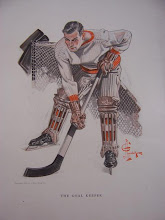
Boston, brilliant!
Mother Nature served up an absolutely stunning day here on Boston's North Shore -- cloudless, warm, with a lilting sea breeze floating through the trees, taking the edge off the unseasonable high temperatures. It's the kind of day, if you believe in such things, that makes it easy to imagine the spirits of loved ones long gone benevolently looking over your shoulder. In short, a spectacular spring day that Mom would have loved. What I wouldn't give to have her here to share it.
My siblings and I lost Mom a year ago, Thursday, May 22. In all honestly, there was no way I, or any of us, could have envisioned the impact that moment would have on our lives. At the time, we were so focused on Mom's needs and well-being, making sure that she got the best care as her long, excruciating battle with cancer played out. We wanted to ensure she was comfortable, relatively pain-free, and the hospice staff was tremendous.
In the weeks leading up to that fateful day, this vibrant, courageous woman slowly wilted before our eyes. But, remarkably, she never gave in to the disease, never once allowed the cancer to cast a shadow over her unshakable will and faith.
I remember one moment, in late April, when I stopped in to visit Mom in the early morning. I asked her how she slept, and she slipped, saying that she had seen her parents during the night. "How did they look?" I asked. She fidgeted, clearly uneasy with the question, but I persisted. "Oh, child, you're not going to let it go, are you?" Mom replied.
"They looked good," she said, finally. "Those are two people I'm really looking forward to seeing."
Today, I know exactly how Mom felt. I miss her terribly. Her voice, with all its wonderful inflection, her joyful laughter, her searching eyes, her heartfelt concern and advice, her interest in all things regarding her family, and her boundless love. She was a true matriarch, the women who held together our band of six after we lost Dad to cancer 37 years earlier. The fact that Mom, who never once smoked (which was Dad's undoing), would be stricken with breast cancer seemed a cruel irony. She battled it once into remission, but the cancer, as it so often does, proved relentless.
During the wake, and the funeral, I know my siblings and I felt some sense of relief. Mom was no longer suffering, and we took comfort in that. I told a number of visitors in the receiving line, "The loss is great only because the woman was great."
Still, in the subsequent weeks and months, we began to understand the full measure of our loss, the chasm that this great woman's death had created. I remember my brother Sean saying he had reached for the phone on numerous occasions, to call Mom, only to be left wrestling with elusive ghosts and a deep sense of broken bonds. I'm sure all my siblings, and my sister MaryEllen in particular, have experienced countless moments like this in the past year.
Last fall, while the girls and I were enjoying a post-lacrosse dinner at a nearby Mexican restaurant, Lauri took a moment to check her voice mail messages. She stopped suddenly, and passed her cell phone to me, letting me listen to a message that Mom had left months earlier. In those rich, enthusiastic tones we all knew so well, Mom was congratulating Maddi for a great result in a swim meet. Hearing Mom's voice was almost unbearable, and the tears just flowed from my eyes.
This past winter, my daughter Brynne struck up a conversation with an elderly rink attendant before one of her ungodly early Squirt hockey games. Brynne has a gift for looking past appearances, and the attendant's scruffy nature didn't bother her a bit. She noticed his pink shirt, and told the man how much she liked it. He said he wore pink in honor of his wife, a breast cancer survivor.
Brynne mentioned that she lost her Grammy to the disease, and the attendant turned to me. "If you'll wear it, you can have this," he said, pulling a pink rubber bracelet off his wrist. I promised I would, and I've worn it ever since, a pink bracelet for Mom, and a yellow LiveStrong bracelet for Dad, side by side, as I hope my folks are in whatever afterlife exists for us.
The bands serve as a constant reminder of what my responsibilities are, as a man, a husband, a father, a human being. And, yes, as a son. Mom was a model worthy of emulation. I only hope I can make her proud. On this day, this beautiful, sunny spring day, I have to believe she's watching over us, and that's all the motivation I need to make sure I walk the talk. I pray quietly that I'm living up to the standard she set for all of us. And I'm looking forward to seeing her again one day. Not soon. But definitely someday.
Best,
-Brion







